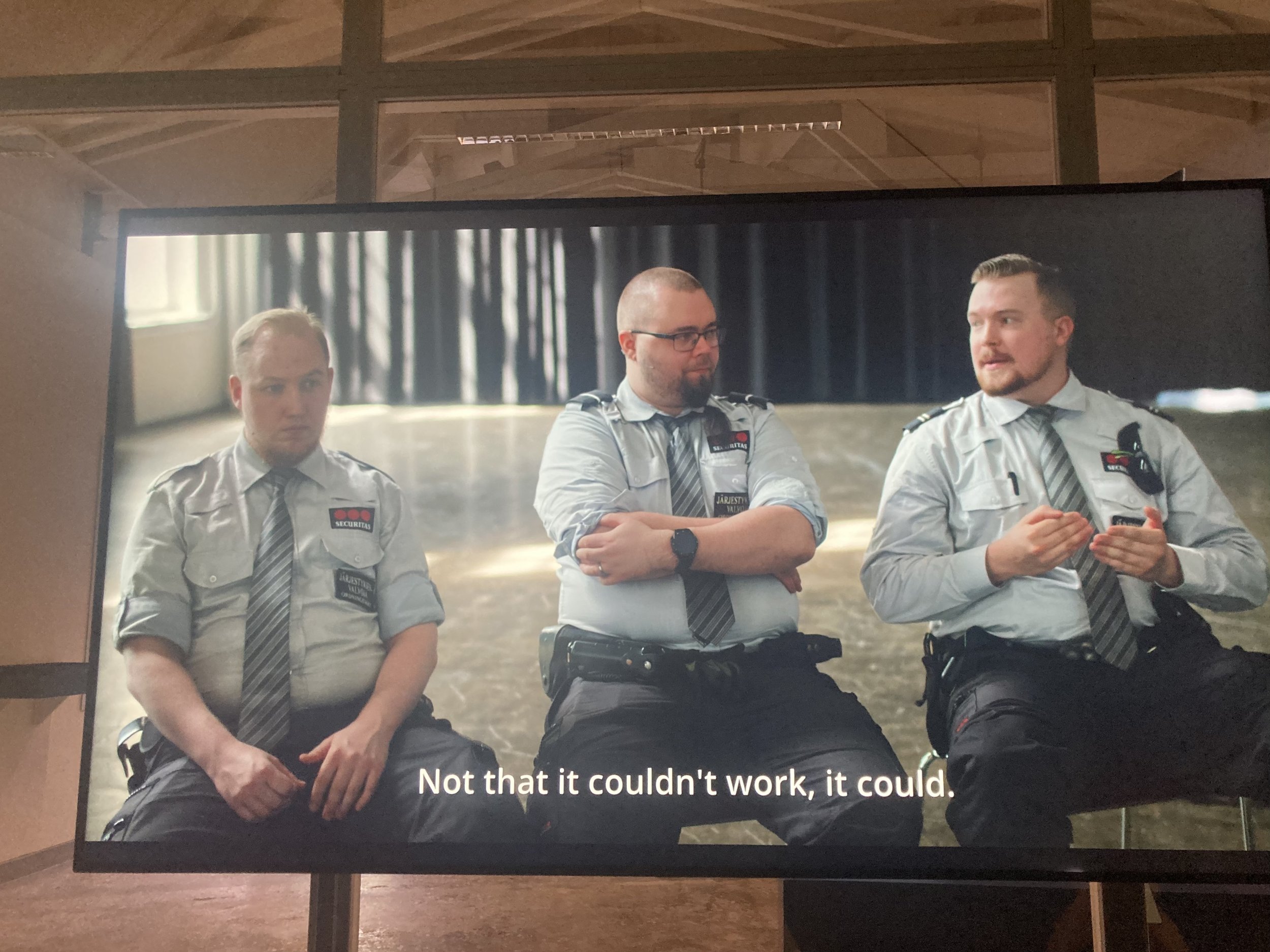Two Venice Pavilions: Body Interactions
Some quick notes on two of the pavilions at the Venice Biennial, both with artists I know about from home; the Finnish and the Dutch pavilions, works by Pilvi Takala and Melina Bonajo.
Alvar Alto’s furniture-like pavilion is an artwork itself (you feel like you enter a modernist treasure chest) and Pilvi Takala’s work doesn’t try to aesthetically compete with it in any way. The space is divided by a wall of mirrors. Only after exiting and entering on the back side, one realizes it’s a one way mirror. From here one can observe the visitors in the space one was just in. A fellow visitor nocks on the glass to attract the attention of her husband on the other side, but he just looks confused around. The power is all on this side of the glass.
The work is about shopping mall guards, with first an introduction through a text-message back log. To make the work the artist worked as a certified guard for several months. Not only her observations, but also her friendships created among colleagues are crucial. Just from reading the short messages, I feel the tention. She’s not really undercover and the leadership knew about her work, but it seems like a precarious position to put herself and others in.
In the second room there is a video showing a process between the guards she befriended and actors playing people they interact with, and they’ve discuss and tests out their ways of executing their power in less violent ways. It’s a video that is educationally useful, and it can be interpreted in many ways, but it’s also a most basic piece about bodies. How do you approach the other when you have the power? How do you safely approach someone with power, when you see what they do is wrong?
The fellow visitor who nocked on the one-way mirror forgot to reflect upon her position as the one with oversight. Her confused husband on the other side has no way to understand and react accordingly. It’s a simple mirror image, but it feels most relevant to all of us.
The second pavilion I want to write about is not in the exhibition area, but in an old, de-scarified church in the city. It’s hot and we walk far to get there, so already entering the cold, pillow filled space feels like a relief. Here Melanie Bonajo has created a world of beautiful rainbow colors, and it feels a lot more like a re-sacrificed than a de-sacrificed room, though in a seemingly completely new way.
A huge video screen is full of bodies. Naked bodies. Touching bodies. Bodies of different size, color, gender and shape, all safely interacting. Voiceovers tells personal stories about learning to receive touch freely and joyfully. It’s sexy, but not in a sexualized way. When we are there, small kids play around on the pillows, and an old couple walks slowly around in aw. The title of the work is “When the Body says Yes”, and it’s like the whole room is a body that sings its Yes out loud, but in the most tender way.
One scene in the film is different: hands stretch out harshly towards someone, but the body shouts a clear “No”. It knows how to reject what doesn’t feel good or safe; only then can one move on to the “Yes”.
Body acceptance and safe spaces are topics often discussed in social media and the news, but this is not a space for discussion or judgement. The colorful, fun and even holy form of the work fills the space completely. A space is created where power relations are put on pause, and even if many sorrows are allowed in, they are not in the way for blooming right now. Little do I know that I will find similar themes in Giotto’s 1303 chapel the following day.
I realize I’m not the most critical viewer here, partly because I was high on the holiday pleasures of a beautiful city and delicious food when I was there. But it’s not to be forgotten that a big Yes also can be a protest. And when I leave the dark, cool and soft space, I’m again in a world where this Yes is not available for all.




